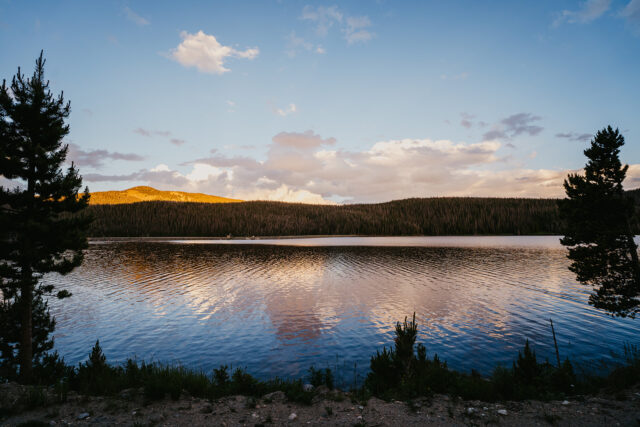
As I drove into the mountains, I listened to the podcast: Thirst Gap: Learning to Live with Less on the Colorado River. It shares how the Southwest is adapting to water shortages as climate change is causing the land to warm up and dry out. It shares story after story along the river: debates among farmers needing to water their crops, residents losing their lawns, worries that Lake Powell will soon be a thing of the past, eye-opening descriptions about the white rings around Lake Mead – the nation’s largest water reservoir, tribes holding significant rights to the river but being left out of the conversation, and how the river ends in a canal in Mexico that has been drying for decades.
It made me think, when an infant cries, it’s expressing that something is wrong since it doesn’t have the vocabulary to fully express what the problem is. These stories along the river tie to mother nature’s cries of a crisis, and thanks to the Sonoran Institute, I am tuned in.

I was excited for what was to come as I drove 160 miles west, into the mountains. The Sonoran Institute was giving me the opportunity to witness a taste of life along the river for myself and to write my own story through photography. However, at my first stop in the city, I noticed that what I listened to on the podcast and what was available to me as a visitor in Glenwood Springs were somewhat different.
I met the Colorado River in Dotsero, Colorado. One of the closest points of the river to Denver. Here is where I set up camp. Dotsero is home to Colorado’s youngest “active” volcano (its last eruption was just 4,200 years ago). Dotsero and Glenwood springs were once places where the Ute tribes inhabited the hot springs and vapor caves before settlers came to the area. Today, Glenwood Springs is known as a connecting city between the west and Denver, a beautiful canyon, multiple hot springs, and a plethora of outdoor activities to do along the river (hiking, biking, kayaking, fishing, and more). I pulled up and walked around at a rest stop. With Colorado being a landlocked state, any body of water brings a feeling of refreshing joy. As I looked around kids were playing on the rocky shore, an Amtrak train was heading east to Denver, a group of water rafters were heading west, and the cars on the highways were buzzing behind me. Because of the river, there was a buzz of energy in the air. Sights to see, water to get in, every moment fleeting, waiting for no one and moving on downstream.
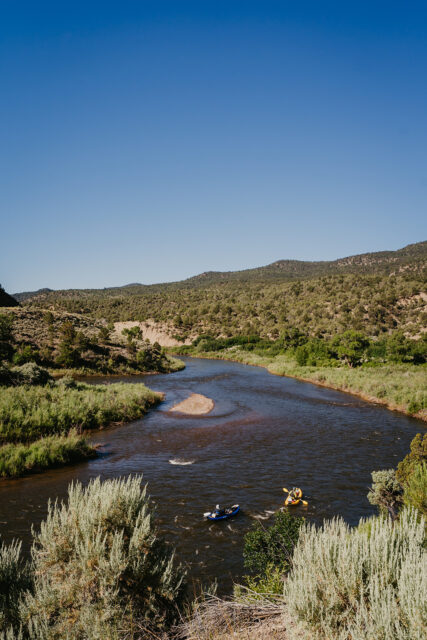
As part of the assignment, I looked for diversity along the river. It was difficult to find any nods to the rich Native American history or tribal presence. A store with a Native American wood carving at the entrance advertising Moccasins was full of tourist items shipped in from outside of the US. I stopped into a consignment store next to it, The Aspenite, that was opened by a family from Panama. Her aunt is a real estate agent in the area and told them to come. She told me she loves Glenwood Springs and all it has to offer. Outside of that, the majority of people that I saw both working and visiting (including boaters, ranchers, rangers, bikers, campers) were white or white-passing, like much of Colorado.
The diversity along the river doesn’t come from the majority of people that visit the area here in Colorado, it comes in the diversity of what the river has to offer. Like the veins of the body, rivers are the veins of Mother Nature. This river offers water, a source of life, a home to the wildlife, a sight to witness, a place to refresh, an income for locals, a place to play in, a canyon to raft, drive, and run a train through, a connection to the west, and, for the city of Glenwood Springs – a source of energy.
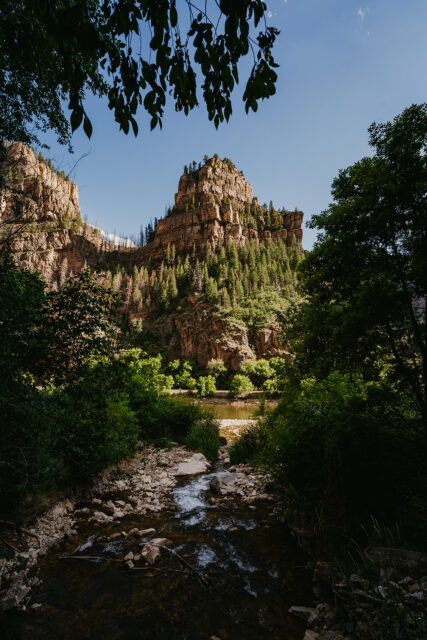
According to GlobeNewsWire, Glenwood Springs is the 2nd City in Colorado and 7th in the U.S. to Use 100% renewable electricity. The article writes, “Glenwood Springs purchases all its electricity from clean energy sources, primarily wind-generated electricity provided by the Municipal Energy Agency of Nebraska (MEAN)… There is no increased cost to end users, a perk that sealed the deal and benefits the town’s residents, business owners and visitors… Glenwood Springs was one of the first places in the U.S., even before New York City, to have electric lights powered by the hydroelectric dam in Glenwood Canyon, along the Colorado River. Acknowledging the importance of keeping sustainable ideals at the forefront of Colorado travel and tourism. Providing clean energy to help protect the area’s natural resources is a major accomplishment.” The final photos of the rafters unloading into the water are taken right outside of the dam. The path to the dam was closed for restoration at my time of visit.
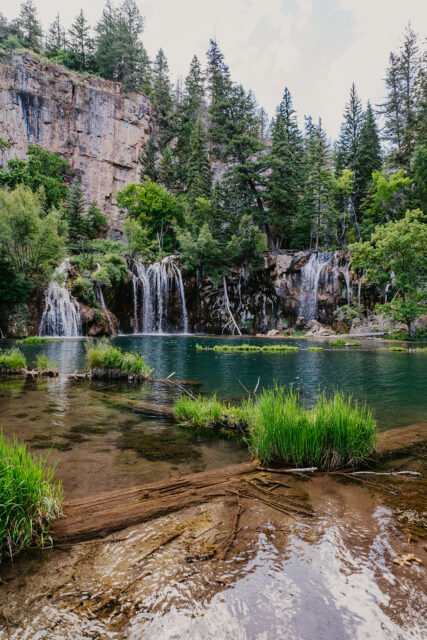
After exploring Glenwood Springs, I took Colorado River Road north, which followed every bend and twist of the river. It would cross over the river, move around people’s properties, and then meet up with it again as the road went on. The size of the river fluctuated between roaring rapids, calmer streams, lakes, and reservoirs. This year is the first year that Colorado hasn’t been under a drought warning since 2019 but that doesn’t mean that the river is at its highest flow. As I was photographing a rapid, I bumped into a local who was river surfing. She said the streamflow level is at 6,000 cfs (cubic feet per second, a measurement of water flow) right now. When at 15,000 cfs people take off work, but at 22,000 cfs’? People quit their jobs. It has already started to decline since my visit in mid-July and historical graphs show that this year is the highest level the river has been in the past three years.
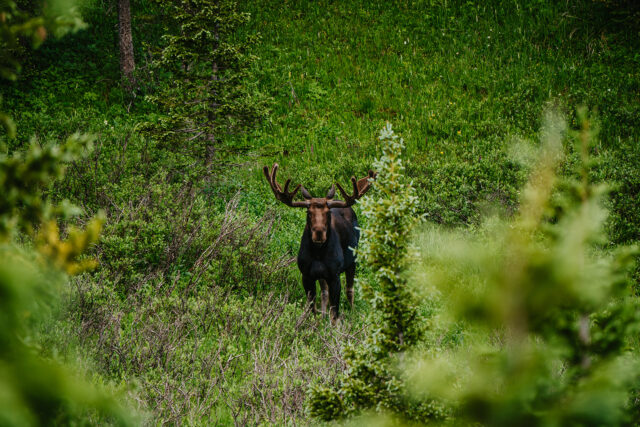
Photographing the river was an amazing experience. Whether it be the canyon or wildlife, there was beauty to be witnessed around every bend. People use and depend on the water, that is fact. However, while water is life, this river in particular, owes us nothing. The snow caps will melt and the river will flow, year after year, until it doesn’t. Then, what is to come of the land and the life around it?
Thank you, Sonoran Institute, for sending me out to hear and photograph the river’s story.
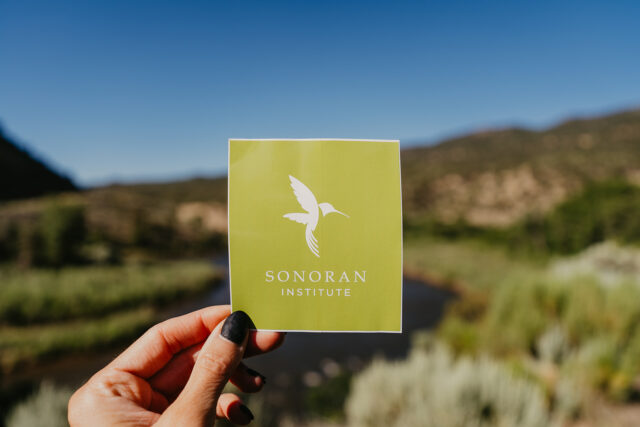
Written by Becky Duffy, edited by Kashja Iler
See the full photo journal here.
